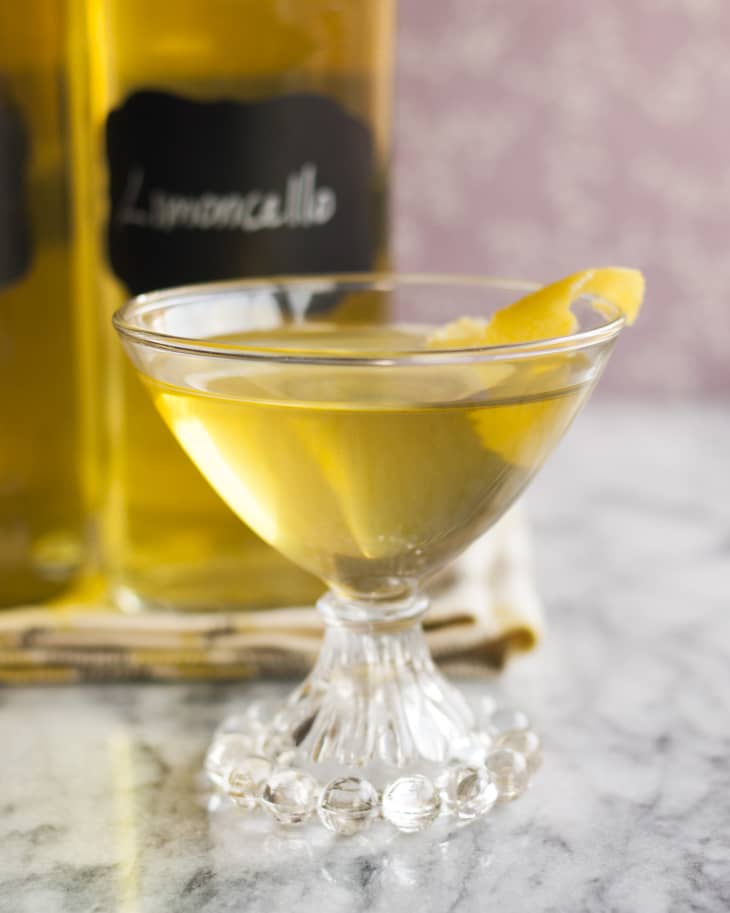Why Limoncello Is the Digestif of Summer
Typically, we think of digestifs — those complex, often-bitter herbal liqueurs sipped after a meal as a digestive aid — as a cold-weather indulgence. After all, it’s during the long, frigid winter months that we tend to overindulge on the food front, taking an extra portion of hearty stew or digging into a warm apple crumble, both to heat ourselves up as well as to bring some gastronomic comfort during this SAD-inducing season.
After dinners like these, when our stomachs are just a little too full, it’s nice to sip a snifter of apple brandy, nurse a small glass of port, or even down one of those adorably tiny bottles of Underberg, Germany’s favorite digestif. These potent liqueurs settle our stomachs and, once again, warm us up a little bit — two birds, one stone.
But while delicious, many traditional digestifs are just too darn heavy to drink during the summertime. Often dark, complex formulas of bitter roots, fruit peels, and vegetables such as artichokes and rhubarb, the none-too-subtle flavor profiles of spirits such as fernet, chartreuse, and Cynar are too weighty and warming to drink on a hot night.
And yet there’s something about the digestif tradition that’s perfectly suited for summer. The months between June and September tend to be our most social ones, punctuated by barbecues, picnics, and glasses of rosé on the stoop. These are evenings when we want to encourage our guests to have one for the road, to hang around just a little longer and enjoy those precious few moments when the heat finally dissipates.
Digestifs are just the ticket, and luckily one of the world’s most popular digestifs is as summery as they come.
Limoncello, an Italian liqueur created to make use of the Amalfi Coast’s superior lemons, is made by infusing lemon peels into a neutral, high-proof spirit, producing a bright, citrusy quaff.
Because the spirit is sweetened, it’s lovely served chilled all on its own, or lightened with soda water in a tall glass over ice. Tart and refreshing, it’s the perfect antidote to too many ribs and, as a bonus, it’s an easy way to get your friends to stick around for another hour or so.
The best commercially made limoncello is from Italy, where small Sicilian producers adhere to traditional recipes to produce lightly sweet, balanced spirits. Unfortunately, the majority of limoncellos that are exported to the U.S. lack in quality, tending towards the extremely bitter or the intolerably sugary.
But if you can’t make it to Palermo this summer, never fear: Limoncello is cheap and easy to make at home, requiring only organic lemons, high-proof vodka, and sugar. Best of all, at home you can balance the limoncello to your liking, reducing the sugar content for a more tart sipper or upping it for something a little sweeter.
So, the next time you’re whiling away a summer evening with friends, break out the limoncello and keep everyone talking and laughing for a little while longer.
Try These Limoncello Cocktails
Have you tried limoncello? How do you drink yours?
